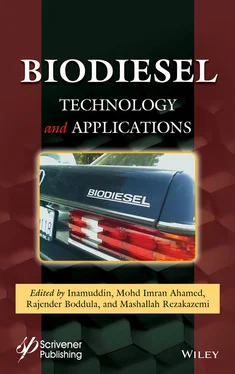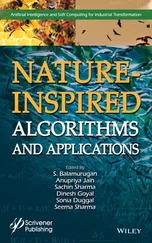Process modeling, simulation, and statistical approaches are the best way to tackle this problem. Modeling and simulation of the processes are the base of in silico experimentation that provides similar environmental conditions of the processes just like real system without so much investment. This not only provides process mechanism information but also gives support for process development. Reaction optimization is difficult to achieve and it requires a lot of efforts and financial support. While optimization, high efficiency of one of many parameters sometimes reduces the demand of some other parameter and reaction product may not alter so much. For example, according to Tufvesson et al . [232], if enzyme has excellent catalytic activity then this minimizes the need of enzyme specific activity and similarly, if enzyme catalytic activity is fair enough to product healthy amount of product then ultimately need of efficient downstream processes will be reduced. So, all in all optimization of chemical processes is difficult and tedious to achieve. That is why in silico experimentation is helpful in process of optimization and handling.
Modeling and simulation of any process gives idea to the researchers what they actually need regarding system conditions, type of catalyst with respect to their mechanism kinetics and energetics from ping pong bi bi mechanism, type of substrate, and various parameters setup. This greatly prevents hit and trial approach and makes the process cost effective. There are two basic approaches in process modeling: (a) empirical approach deal with design of experiments and (b) statistical approach that gives relation between process outcome and parameters [232]. Parameter estimation is a key thing to avoid false outcome in process modeling and more chances of error in estimation leads to wrong direction. Yu et al . [231] observed that, optimal experimental design was developed for the improvement of process estimation in biodiesel production process catalyzed by Novozym. Simulation demonstrated the reduction in producing errors while estimating parameters through optimal experimental design. Response surface methodology (RSM) is a collection of various mathematical and statistical techniques that is used when there are multiple variables influencing the reaction response at the same time. RSM is used for improvement, development, and especially optimization of chemical and biochemical reactions. RSM creates a mathematical model that can be used to predict what can be the response of the process under certain variable conditions. That is why it is called RSM.
A lot of research has been done using RSM to optimized chemical reactions. For example, protease production in a bioreactor taken from Bacillus mojavensis and statistically optimization of media [233] and lipase catalyzed esterification reactions [234]. RSM is widely used for optimization but it can also be used to determine kinetic constants and enzyme stability. Kinetic constants for protease derived from Bacillus mojavensis was determined using RSM [235]. According to Rana et al ., kinetic and stability of b-1,3-glucanase from Trichoderma harzianum and alcohol dehydrogenase was investigated using RSM [236]. RSM for optimization is carried out in 3 stages, (a) independent variable and their level is determined, (b) experimental design is selected then model equation is predicted and verified, and (c) different response plots are obtained and optimum points are determined [237]. The most common and successfully implemented design used in RSM is central composite rotatable design (CCRD) for the optimization of reactions [238, 239]. Like every other thing, RSM surely has advantages as well as disadvantages ( Table 1.8). Like other chemical processes, optimization of enzymatic catalyzed biodiesel production process has been widely investigated using RSM statistical approach [241].
According to Sheih et al . [241], conversion of soybean oil into biodiesel was catalyzed using lipase from Rhizomucor miehei (Lipozyme IM-77) in the presence of methanol which was being investigated in this experiment. RSM was implemented with having 5-level-5-factor CCRD. Through this design and RSM, effect of time, methanol-to-oil molar ratio, temperature, water content, etc., were measured and evaluated. Under optimal conditions that were temperature of 36.5°C, reaction time of 6 h, water content of 5.8%, and substrate molar ratio of 3.4:1, resulted in 92.2% conversion yield when analysis was done using ridge max analysis. In another experiment, optimization was done in pretreatment step to lower the concentration of FFA of Mahua oil that would halt the downstream processes and ultimately biodiesel production. CCRD was again used to check the effects of acid and methanol concentration and reaction time in reducing the production of FFA. After pretreatment, Mahua oil was catalyzed through alkaline catalyst, and then, the resultant biodiesel produced was according to American and European standards [242].
1.13 Conclusion and Summary
Currently, the use of fossil fuels is on its verge because of the dependency of our transportation and main industries on it. If its usage goes with even at the same pace, there are great chances of its shortage due to depletion in reservoirs in very near future. So, there is a strict need to divert toward alternate sources like biofuels which not only overcome the shortage of fuel but also environment-friendly. Biodiesel is the most widely used biofuel due to its vast use from direct fuel to a lubricating agent. The production and use of biodiesel are restricted to limited countries but there is a need to broaden its use worldwide. The barriers which constrain its worldwide use are mainly related to biodiesel production cost which can be reduced with optimization of the production process by selection of preferable feedstock, reaction conditions, type of catalyst used, enzymes for catalysis, and many other factors.
Researchers are making their full effort to construct a cost-effective bio-diesel production process. Oils extracted from various sources are used as a substrate or feedstock for biodiesel production, but microbial oil extracted from microalgae is used at first place due to low cost, easy, and quick production when compared with plant and animal oils. However, biodiesel produced using animal oil act as a good lubricating agent along with good oxidative stability. Biocatalysis involving enzymatic biodiesel production via lipase enzyme is considered a low-price process as compared to other ways. Lipase enzyme is preferably used as biocatalysis because of its easy separation and reusability.
There are many factors like acyl receptors, water, and temperature that have a serious impact on enzymatic transesterification and great research have been done for to optimization of these factors to make the process easy and affordable. Lipases from a broad range of sources immobilized by different techniques on a variety of supports have their own resulting impact in biodiesel production process. However, the use of whole-cell immobilization or combination of lipase with optimized reaction conditions like temperature, time of reaction, and pH makes the process industrially favorable. Still, there exists a space for improvement to make the biodiesel production process affordable and easy to conduct.
1. M. Naik, L.C. Meher, S.N. Naik, L.M. Das, Production of biodiesel from high free fatty acid Karanja (Pongamia pinnata) oil, Biomass and Bioenergy . 32, 354–357, 2008. https://doi.org/10.1016/j.biombioe.2007.10.006.
2. W. Parawira, Biodiesel production from Jatropha curcas: A review, Sci. Res . Essays. 5, 1796–1808, 2010. https://doi.org/10.3109/07388551.2010.487185.
Читать дальше












